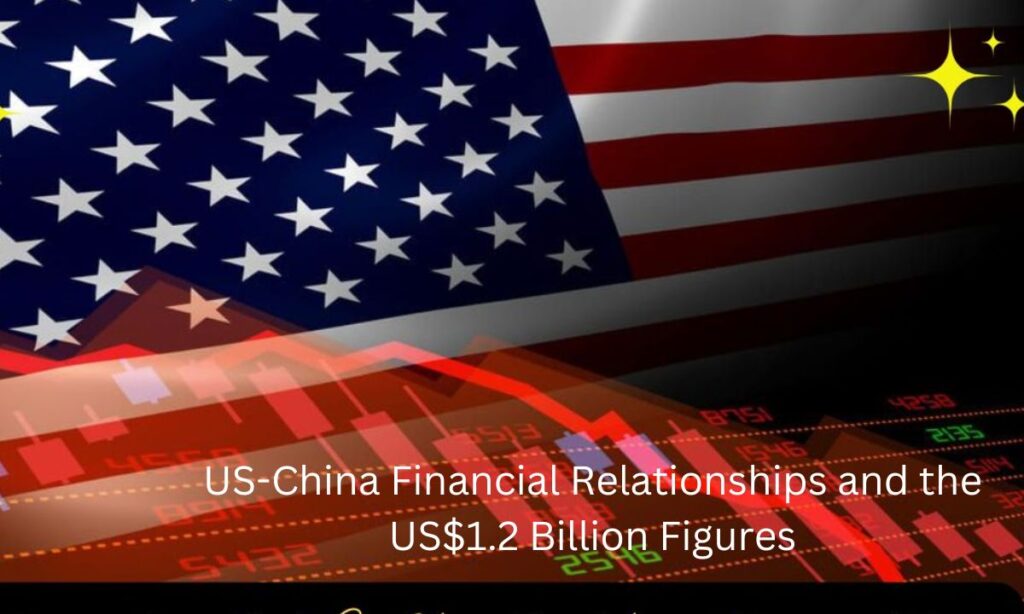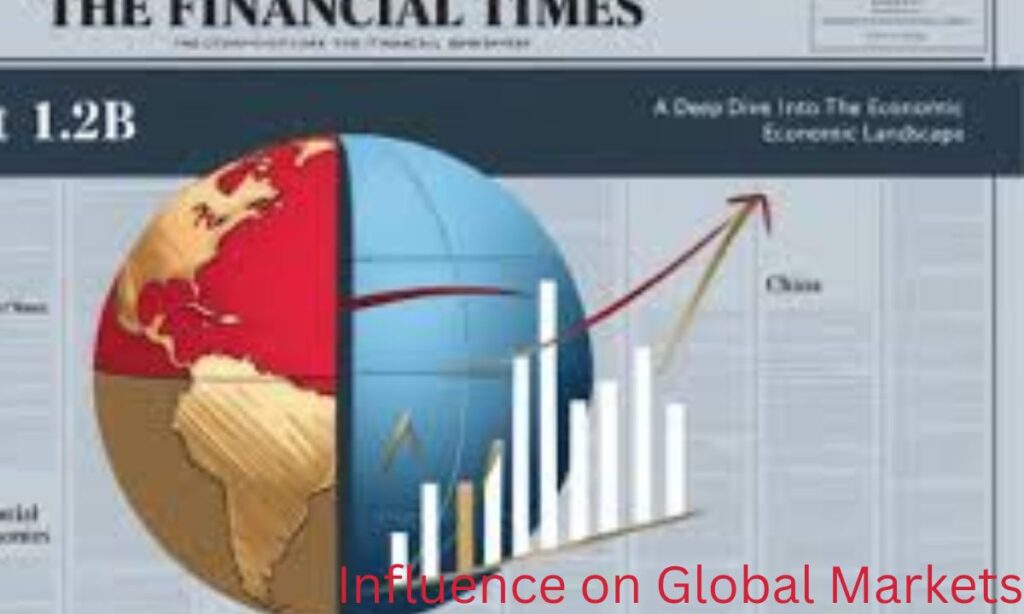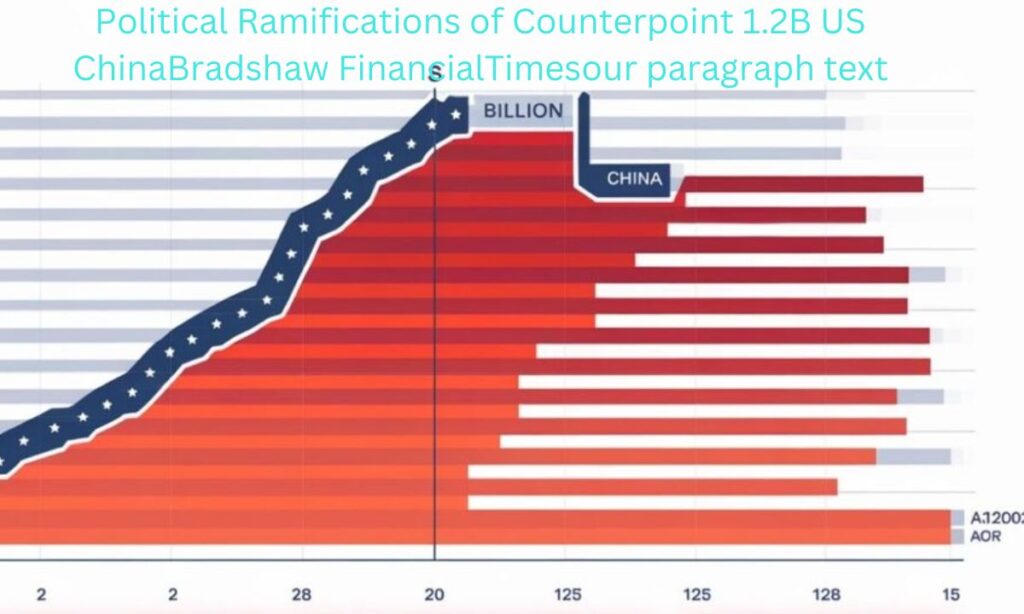The Counterpoint 1.2B figure, reported by Bradshaw in the Financial Times, highlights a key $1.2 billion transaction between the US and China.
This amount reflects significant economic ties and has implications for trade agreements and the global economy. Understanding this figure is crucial for analyzing current international relations and financial dynamics.
What is Counterpoint 1.2B US ChinaBradshaw FinancialTimes?
Counterpoint 1.2B refers to a $1.2 billion figure highlighted by Financial Times reporter Bradshaw. This amount indicates a crucial moment in US-China relations.
It may represent a trade agreement or an investment in strategic sectors. The significance of this figure is profound.
It illustrates how financial transactions between the US and China can affect both economies. This transaction could indicate a potential trade deficit or highlight technology investments in key areas like semiconductors.
Ultimately, this figure unveils the complexity of the interdependence between the US and China.
Breaking Down the Components

The Counterpoint 1.2B figure breaks down into key elements like trade agreements, technology investments, and trade deficits. Each component showcases the economic interdependence between the US and China. This highlights their significant influence on global markets.
Key Components of the Transaction
| Component | Percentage | Focus Area | Key Trends |
|---|---|---|---|
| Direct Investment | 35% | Technology and Manufacturing | Rising tech sector focus |
| Trade Flow | 40% | Consumer Goods and Services | Supply chain diversification |
| Financial Services | 15% | Banking and Insurance | Digital payment integration |
| Other Sectors | 10% | Infrastructure and Real Estate | Sustainable development |
US-China Financial Relationships and the US$1.2 Billion Figures

The financial relationship between the US and China has always been intricate. The $1.2 billion figure underscores the ongoing evolution of these economies.
Over the years, both nations have engaged in numerous trade agreements. These agreements are often fraught with risks. The Counterpoint 1.2B number reflects this complexity.
If this figure represents a trade agreement, it could ease tensions over tariffs. This would facilitate investments in critical industries, particularly in technology.
However, if the $1.2 billion indicates losses or excessive costs, it could exacerbate existing tensions. This situation might lead to increased tariffs and taxes.
The relationship between the US and China is characterized by both cooperation and competition. The trade dynamics are continually shifting.
The $1.2 billion figure serves as a snapshot of these ongoing changes. US-China relations are pivotal to the global supply chains.
Disruptions in this relationship can create ripples across the world. The market impacts of such transactions are significant.
For instance, a positive outcome could boost investor confidence. Conversely, negative developments could lead to stock market reactions that affect global markets.
In summary, the $1.2 billion figure reflects financial interactions and highlights the broader implications for both nations. Understanding this figure is essential for grasping the complexities of US-China relations.
Influence on Global Markets

The $1.2 billion Counterpoint deal significantly impacts global markets. The interconnectedness of the US and China means that any financial transaction of this magnitude will have far-reaching consequences.
If this figure is perceived as a technology investment, it could lead to advancements in several sectors. China is a leader in mass production, while the US excels in technological innovations.
A collaboration in these areas could benefit both economies. The global market is sensitive to developments in US-China relations.
If investors believe that the relationship is improving, they may react positively. This optimism can boost stock prices and increase overall market stability.
However, negative news could lead to declines in certain sectors. The semiconductor industry, for example, is particularly vulnerable.
Any disruptions in this area could affect prices and production worldwide. Furthermore, the global economy is influenced by the investment flows that arise from such transactions.
The $1.2 billion figure could drive investments in various industries. This would create a more robust economic environment.
Countries that rely heavily on trade with the US or China would feel these effects. They must navigate their policies in response to the evolving landscape.
In conclusion, the Counterpoint 1.2B figure serves as a barometer for global market sentiment. Its implications extend beyond the US and China, affecting economies worldwide.
Political Ramifications of Counterpoint 1.2B US ChinaBradshaw FinancialTimes

The political ramifications of the $1.2 billion transaction cannot be overlooked. While it may seem like a purely financial figure, it carries significant political weight.
The dynamics of US-China relations encompass more than just economic factors. Political leaders must consider the broader implications of such a transaction.
For instance, if the $1.2 billion represents a commitment to limit tariffs, it could enhance diplomatic relations.
This would signal a willingness to engage in economic cooperation. Conversely, if this figure is associated with threats or unresolved disputes, it could worsen tensions.
The stakes are high in any negotiation involving such a substantial amount.This transaction also reflects broader geopolitical strategies at play.
Both countries seek to assert their influence in the global arena. Investments in critical technologies can enhance their competitive advantage.
The Counterpoint 1.2B figure may serve as a signal of intent from both nations.The potential for collaboration exists.
READ THIS BLOG:Demystifying Virtual Thread Performance: Unveiling the Truth Beyond the Buzz
If both sides can find common ground, they may pave the way for improved relations. However, if the $1.2 billion is viewed as a source of discord, it could lead to further economic disruption.
The consequences would extend beyond bilateral ties, affecting international trade practices.In summary, the political ramifications of the Counterpoint 1.2B transaction are profound. They influence not only the US and China but also the broader international landscape.
Frequently Asked Questions?
What does Counterpoint 1.2B US ChinaBradshaw FinancialTimes refer to?
Counterpoint 1.2B refers to a $1.2 billion transaction illustrating key financial interactions between the US and China.
How does Counterpoint 1.2B affect markets around the world?
The $1.2 billion figure influences global markets by affecting trade agreements and investor confidence, leading to potential stability or volatility.
Is the $1.2 billion valuation of Counterpoint US-China associated with technology investments?
Yes, the $1.2 billion may involve investments in critical sectors, including technology, semiconductors, and AI. These investments are crucial for both nations’ economic growth.
Can Counterpoint 1.2B in the long term enhance relations between the USA and China?
Yes, if the $1.2 billion represents collaboration, it may improve diplomatic and economic relations between the two nations, fostering a more stable environment.
Why is Counterpoint 1.2B significant for most people?
The Counterpoint 1.2B figure is significant as it illustrates the financial dynamics between two superpowers. It impacts global markets, jobs, and international trade policies.
Conclusion
The Counterpoint 1.2B US ChinaBradshaw FinancialTimes transaction is a critical lens through which to understand US-China relations. The $1.2 billion figure encapsulates the complexities of economic interdependence, trade dynamics, and political strategies shaping the future of these superpowers.
Its implications extend far beyond monetary value, affecting global markets and international diplomacy. By examining such figures, we gain valuable insights into the interconnectedness of today’s economies.
Understanding this transaction is essential for anyone interested in the evolving landscape of US-China relations and its impact on the world.














